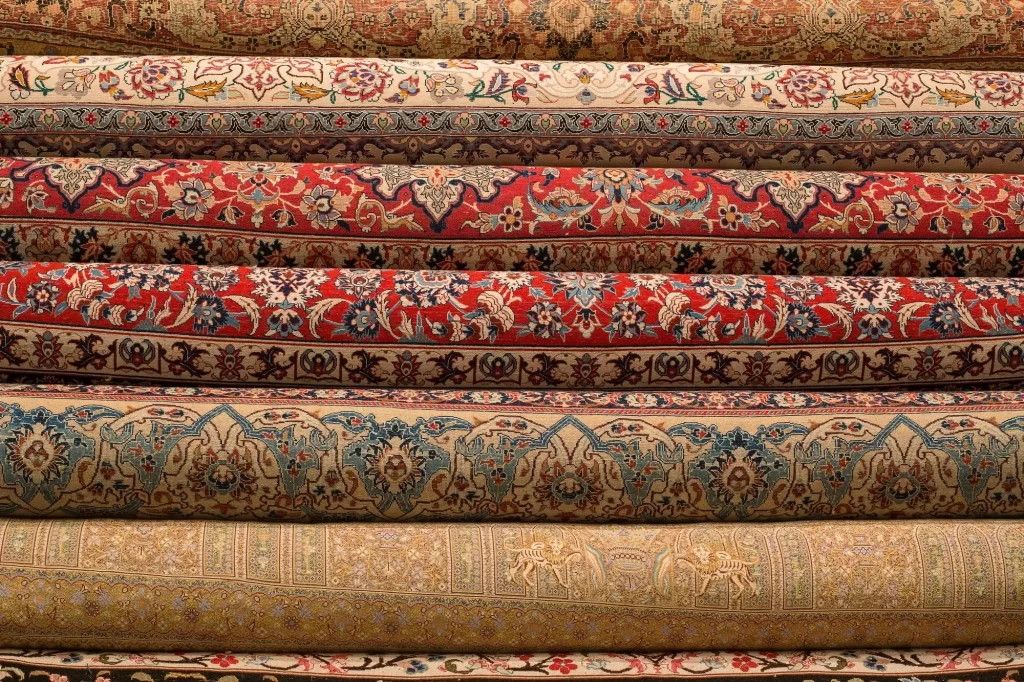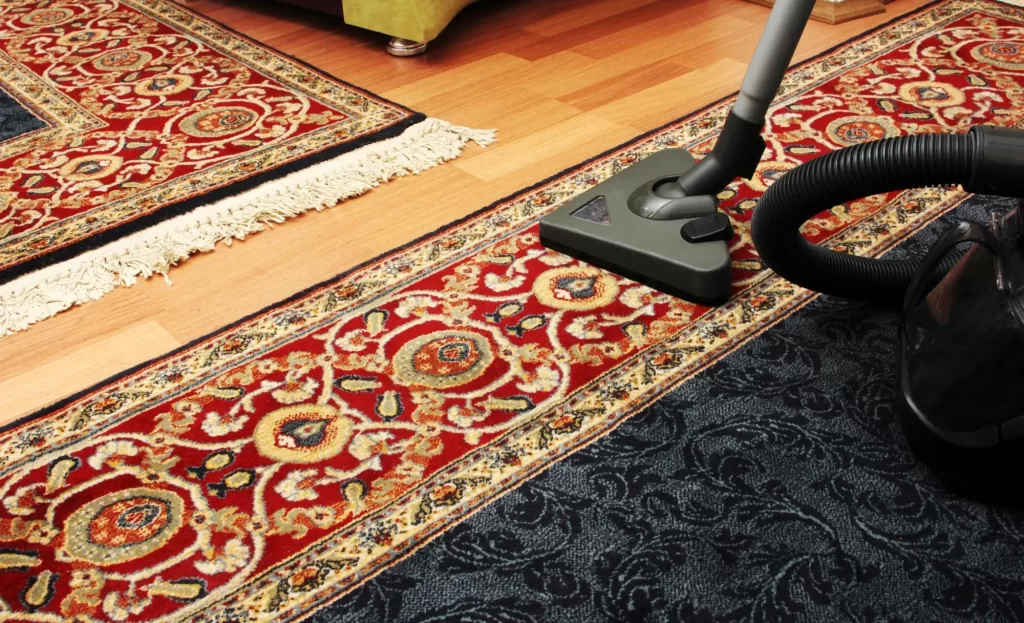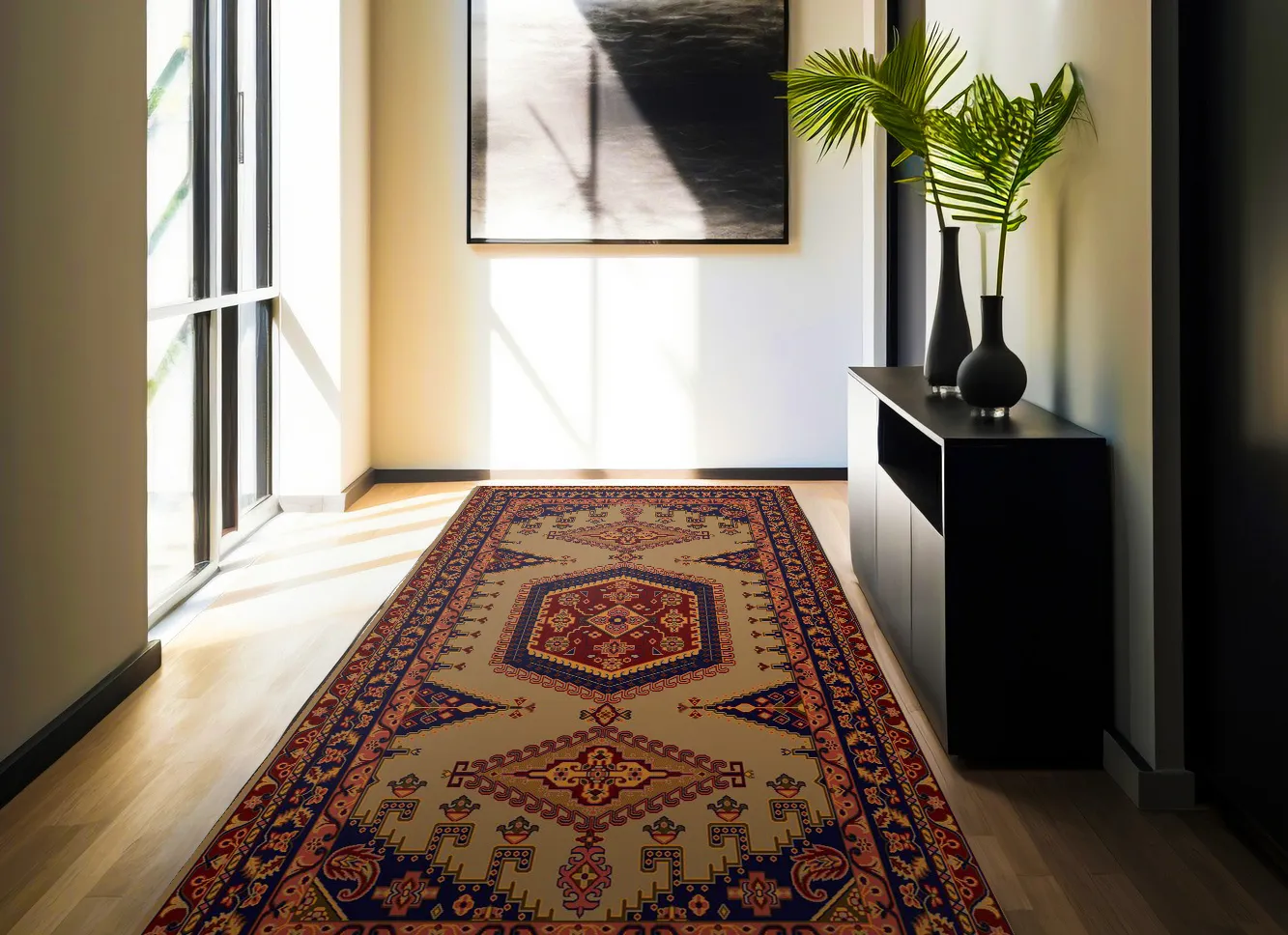A Suitable Rug for a Beautiful Home
Among the decorative elements of a home, few things can effortlessly bring coordination, elegance, and a sense of unity to a space like a beautiful carpet. However, finding the ideal carpet comes with its limitations and challenges. Numerous factors exist, from size and material to style and production quality, and choosing from seemingly endless options doesn’t make the task any easier.
For example, purchasing a too small carpet immediately renders all your efforts in designing the space worthless. On the other hand, a huge carpet can engulf the entire space and overshadow the existing layout. Therefore, finding the balance is the key to success.
To assist you on this journey, we have compiled a comprehensive guide to answer all your questions about buying the best carpet that suits your taste and needs.
?What should we consider before buying a carpet
The most important consideration before anything else is identifying the space where the carpet will be placed and the purpose it should fulfill. Is the carpet intended to be a prominent and impactful element for the overall coordination of the space, or does it have a practical role in preventing foot traffic in high-traffic areas? If you have pets or small children, opting for a delicate antique carpet is probably not wise. After this stage, you should consider the carpet’s size and shape, style and material, type of weaving, and maintenance and cleaning. We will discuss all these aspects in more detail later on.
Size and Shape:
When choosing a carpet for a specific room, it is essential to find an appropriate size, small or large. You want a carpet with the correct dimensions, not too small or too large. In general, find a carpet that can incorporate the main elements of a room or act as a barrier between furniture pieces.
- Living Room: The first thing to consider when placing a carpet in the living room is positioning only the front two legs of the furniture on the carpet. Whether you have a small or large space, the ideal carpet should cover only up to half the depth of the furniture and have the back legs of the furniture on the floor. However, this rule also depends on the design of the chosen carpet. For example, suppose you plan to use small rugs with three-dimensional patterns. In that case, it’s better to arrange chairs or furniture around the desired rug and never place the furniture’s back legs on the carpet to showcase the rug’s pattern and design effectively.
- Dining Room: Use the size of the table as a reference. A circular or rectangular carpet should extend at least 60 centimeters on each side of the table, allowing all chair legs to remain on the carpet even when pulling the chairs back. This prevents chairs from being half on and half off the carpet during meals and prevents people’s feet from remaining on the floor.
- Bedroom: For a large bedroom, choose a large carpet that fits under the entire bed and bedside tables, with additional space on both sides. Alternatively, you can use smaller rugs on both sides of the bed.
- Kitchen and Entryway: Consider using a narrow runner or a smaller piece (60 by 90 centimeters or 120 by 180 centimeters) for these spaces.
Outdoor Space: In outdoor spaces, larger sizes are better, and you should have a 30 to 60 centimeters smaller carpet than the surrounding area.
How to Measure a Room for a Carpet:
Take the overall dimensions of a room and subtract 30 to 60 centimeters to determine the appropriate size for the carpet in that space. Alternatively, you can use colored tape to outline the ideal dimensions of the carpet, measure the area, and then look for a carpet based on those measurements.
Material and Style:

There is a seemingly endless list of descriptors that determine the aesthetic classification of a carpet. However, often, it is the material of the fibers that defines its style. The most common categories of materials include
- Natural Fibers: Wool, Cotton, Silk, Hemp, and Sisal
Pros: Durable and long-lasting; wool carpets excel in hiding dirt.
Cons: Often more expensive and require professional cleaning; dyed silk carpets may lose color if exposed to water. - Synthetic Fibers: Acrylic, Polyester, Polypropylene
Pros: Cost-effective, easy to clean, usually resistant to stains.
Cons: Susceptible to issues related to pet accidents, may become soiled with mold and bacteria and need immediate cleaning; may require replacement sooner than wool or natural fiber carpets. - Artificial Silk: Viscose, Bamboo Silk, Banana Silk
Pros: Very affordable; intricate patterns can hide dirt.
Cons: Viscose acts like a sponge – it absorbs moisture and oil, and even simple water spills can damage the fibers.
The carpet’s material determines its style, durability, and maintenance requirements. Consider your lifestyle, budget, and preferences when choosing the best material that suits your needs.
Carpet Pile:

Carpet density, also known as pile density, refers to the thickness or density of the fibers present in the carpet. Coarser carpets generally have a higher pile density than finer carpets with intricate patterns.
Carpet pile is generally divided into two categories:
- Low-Pile Carpets: These carpets have shorter fibers and loops (such as flat weaves), making them more suitable for high-traffic areas like kitchens.
- High-Pile Carpets: These carpets have longer and looser fibers (such as shag or Moroccan carpets), making them softer and ideal for bedrooms or living rooms.
The height of the carpet pile is more related to aesthetic and functional aspects. A carpet always provides sound insulation regardless of pile height, but thicker carpets offer better thermal insulation. Increasing pile density also enhances the carpet’s longevity and performance over time.
Carpet Care and Cleaning:

Naturally, your carpet will get dirty sooner or later, so it’s essential to consider how to care for and clean it before purchasing. Interestingly, older and antique carpets often outlast newer and cheaper ones that may not have a similar structural strength. Here are care and cleaning tips for carpets with different materials:
- Synthetic Fibers: Stain resistance, steam cleaning, or vacuuming are suitable for these carpets. They may appear dirtier as they absorb dirt and oil, although most of them (such as acrylic and polypropylene carpets) are stain-resistant.
- Wool: Natural oils in wool prevent spilled substances from penetrating the fibers. For handwoven wool carpets, gently blotting the stain to remove any excess material and using a soft brush with dish soap and water can effectively clean it. Avoid vigorous scrubbing to prevent damage to the fibers.
- Cotton and Silk: Seek professional services to prevent worsening stains by trapping them deep into the fibers and damaging the carpet’s color.
Sahand carpets use the finest polypropylene fibers, making them stain-resistant, hypoallergenic, and durable. Sahand’s extra thick and dense yarns provide unparalleled strength to its carpets. Sahand offers a diverse collection of carpets encompassing various styles and applications. These carpets feature traditional Iranian designs as well as modern and contemporary patterns. Additionally, Sahand provides the option for custom carpet production, allowing customers to order carpets with their preferred designs and patterns to suit their tastes and needs.






